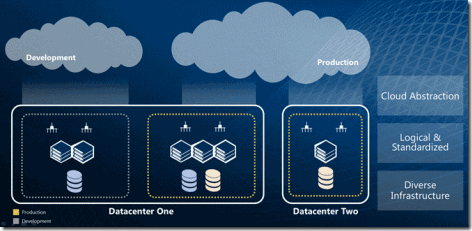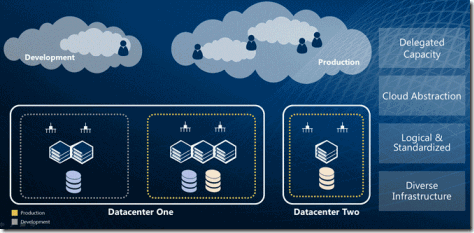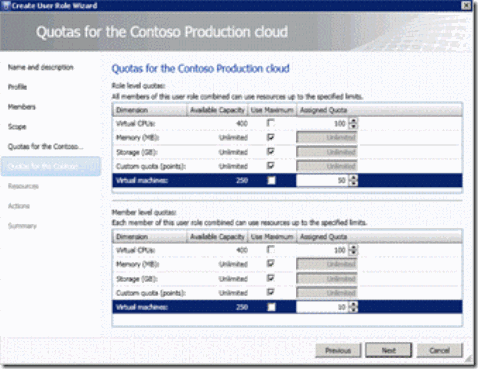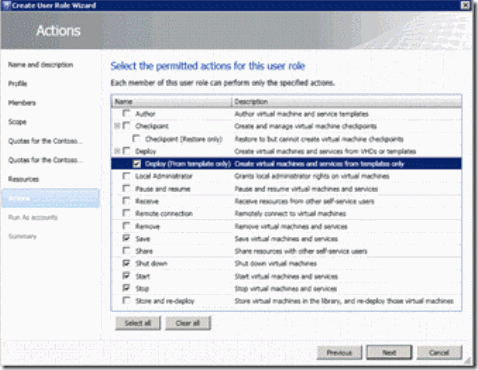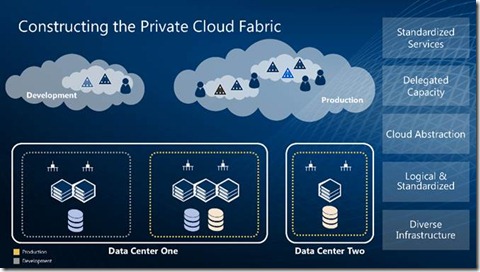Aggregating and Abstracting Resources to offer Private Clouds
One of the biggest advantages of the Private Cloud is the ability to offer self-service to your Line of Business owners. That way they can deploy and manage their services more quickly and efficiently. To gain this ability, you need a way to take all of your diverse hardware fabrics and logically abstract them into a private cloud infrastructure. Also, once you have created these “clouds”, you need to delegate these resources to the correct individuals who need access. The Microsoft Private Cloud allows you to do this through the creation of clouds and delegating these resources to Lines of Business that need to use them in a controlled manner.
Today, when someone wants to deploy a service, you may have a request system where they fill out a form or send an email or something to ask for the service. After you get this request, usually, you will go look at your infrastructure you have and try to find a suitable host or cluster of hypervisors to put the VMs on. Then you would go install a bunch of VMs and their base OS. After that, you would usually log onto the machines and spend hours to days configuring the systems and then installing the application. What if there was a simpler way to give the requestor access to their resources?
Think of it this way:
1) You have compute, storage, and network fabrics made up of different components. You may have different architecture servers (Intel or AMD), you may have different types of storage (fibrechannel or iSCSI) from different vendors, and you have complex networking. You also may have different hypervisors (VMware vSphere, Citrix XenServer, and Microsoft Hyper-V) that you have to deal with.
2) You want to be able to abstract that heterogeneous architecture into something logical and standardized by grouping and sharing that diverse infrastructure.
3) Then, you will abstract these resources to create clouds
a. Notice that resources for the cloud can come from different datacenters. This flexibility gives you options in how you configure your cloud resources.
b. Also, note that you can have disparate hypervisor, compute, storage, and networking fabrics in the same cloud.
4) Once you have created these clouds, you can delegate these resources to different Lines of Business.
a. You can delegate both how much of the cloud resources these groups can use as well as the types of actions they can perform within their portion of the cloud
5) At this point your self-service users can deploy standardized services from templates you have created and offered to the self-service users.
Creating clouds this way and delegating access allow for better utilization and more efficient use of resources than what you may have done before. The reason for this is that, through delegation, we can allow self-service users to deploy services to the hardware, and we can intelligently choose where these services are deployed and remove a lot of the complexity for the self-service users.
If you want to get started creating clouds and abstracting your underlying fabric into the logical resources needed for clouds, please download Virtual Machine Manager 2012 RC or all of the Microsoft System Center 2012 Pre-Release Products. Or, to see how this fits in with what you may be doing join our Private Cloud Community Evaluation Program.
Kenon Owens - Technical Product Manager, Management and Security



